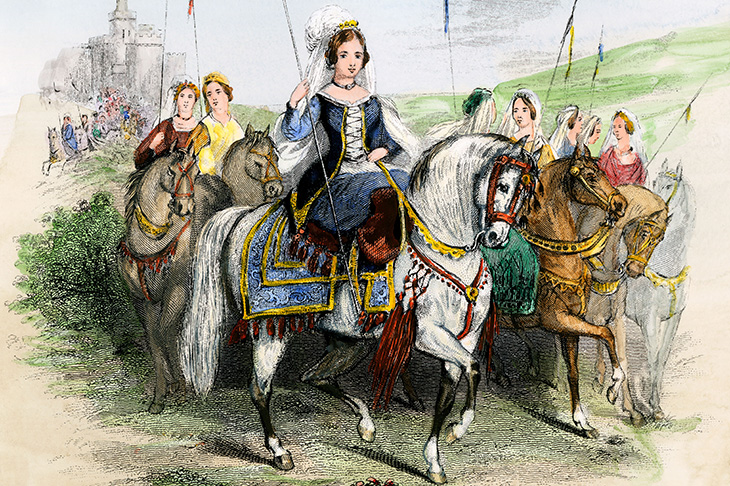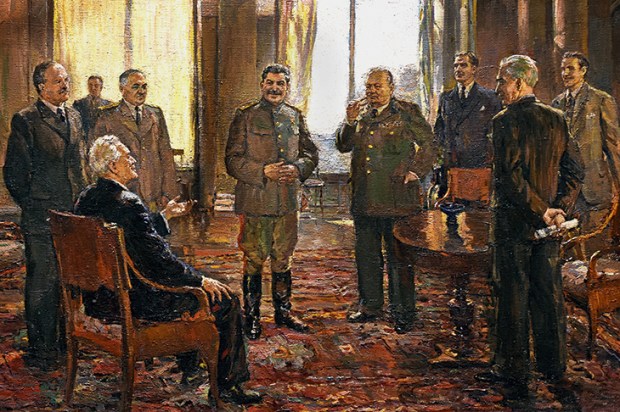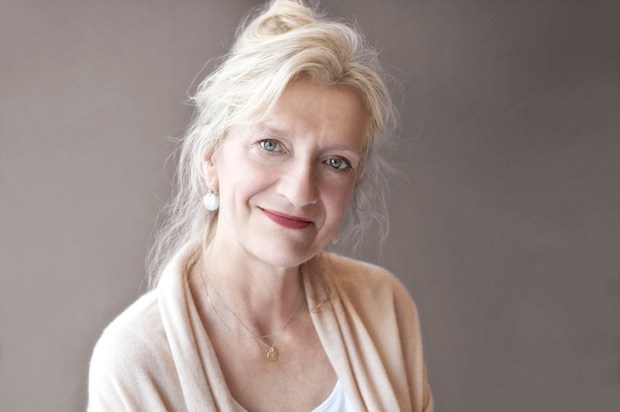Eleanor of Aquitaine is the most famous woman of the Middle Ages: queen of France and England, crusader, mother of kings — ‘lionhearted’ Richard and ‘bad’ John — and ancestress to the royal dynasties of Europe. Yet more nonsense has been written about her than almost any other woman. Much of what we think we know is falsehood or half-truth, and many respected historians fall foul of her myth, endlessly repeating misinformation as fact. For someone so renowned, the written record is astonishingly thin.
Even her birth date (1122 or 1124) is uncertain, as is her place of birth. We know nothing of her looks, personality, education or early familial attachments. In fact we know very little until the death of her second husband, Henry II, in 1189, when Eleanor was 65 (or 67). Then, released from 16 years of captivity — Henry locked her up after she joined their sons in rebellion against him — she burst on to the European political scene and achieved extraordinary things. She ruled in Richard I’s place while he was on crusade and raised an eye-watering ransom when he was captured; she shored up John’s hopeless regime; and she made a perilous journey across the Alps to collect her Spanish granddaughter, Blanca, for marriage to the future Louis VIII of France. But the real Eleanor, for the majority of her long life, is as elusive as quicksilver.
Lack of knowledge has done nothing to prevent her from becoming a cipher for everything society would like her to be. The myths woven around her for nearly a millennium remain irresistible; almost everyone who has written about her falls foul of the ‘Eleanor trap’. In the Black Legend version, she is guilty of incest with her uncle and her father-in-law, of an affair with the ‘infidel’ Saladin, of seducing priests, of riding bare-breasted, and poisoning Henry’s mistress, Rosamund Clifford. One historian maintains that Eleanor enjoyed ‘being beaten’, while another describes her as ‘a real bitch, who could think about nothing but power and sex’. Conversely, the Golden Legend has Eleanor as a prototype feminist, the instigator of the Courts of Love and an intellectual powerhouse — ‘an incomparable woman’.
This latest contribution is from the barrister Sara Cockerill, who is, by her own admission, ‘Team Eleanor’. She writes that any ‘truthful search’ for a woman born nearly 900 years ago is ‘almost impossible’. Yet she has pulled together the recent scholarship, made some astute observations and packaged it as popular history.
Cockerill’s Eleanor, however, is among the most prosaic to date. We cannot imagine this figure as Katharine Hepburn’s complex and irresistibly witty heroine in The Lion in Winter, uttering some of the best lines in cinematic history (‘Of course he has a knife, he always has a knife, we all have knives! It’s 1183 and we’re barbarians!’). The spanking, the incest, the affair with Saladin, the bare breasts, the ‘common whore’ all go, to be replaced with a pious woman, devoted to her family and a lover of polyphonic music; so far, so dull.
Cockerill never takes the spotlight off her subject — but in doing so removes much of the colour. She is interested in the social class of Eleanor’s children’s wet-nurses, while often ignoring the most fascinating parts of her story. There is little on the death of Thomas Becket, and nothing on John’s atrocious behaviour in Ireland. Her Eleanor, once released from captivity, is a loyal mother and an effective fundraiser; we see her freeing prisoners, standardising weights, measures and coinage — all vital information, but on its own, trite.
Character motivation is generally lacking, and much of the text is a list of Eleanor’s grants and itinerary, with little analysis. Cockerill is certainly good on the accounts and the charter evidence, but there is hardly anything on the personalities. She tantalises us. She tells us that the French princess Alys, who lived in Eleanor’s care for part of her early life, was returned to her brother at the age of 35 to marry William of Ponthieu, but neglects to tell us that the bridegroom was a teenager, of 15 or 16 — surely of interest. There is nothing on the background to the crusades nor on the split between the Latin and Greek churches, nor the 12th-century renaissance.
Does Cockerill fall into the Eleanor trap? Undoubtedly. Her Henry is a monster — although she never questions why. She sympathises with Mary of Boulogne, forced out of a nunnery to marry Henry’s cousin, Matthew of Flanders, but she doesn’t mention that Mary’s brother William tried to assassinate Henry; nor that Mary’s marriage, in Henry’s gift, formed a vital part of his political arsenal. By presenting Henry as a ‘psychopath’, and revealing none of his subtleties, Cockerill renders Eleanor as yet another victim of the king’s brutishness — possibly a battered wife.
There are some obvious errors. John of Gaunt is confused with another duke of Lancaster, and cousins are muddled with uncles. Cockerill’s research, however, is mostly excellent. But in failing to set Eleanor’s story in the context of the extraordinary 12th century, and in under-appreciating the people who mattered in her life, this can at best only be a partial biography. Eleanor geeks will still welcome it, though, as a useful addition to the canon on this most elusive queen.
Got something to add? Join the discussion and comment below.
Get 10 issues for just $10
Subscribe to The Spectator Australia today for the next 10 magazine issues, plus full online access, for just $10.
You might disagree with half of it, but you’ll enjoy reading all of it. Try your first month for free, then just $2 a week for the remainder of your first year.














Comments
Don't miss out
Join the conversation with other Spectator Australia readers. Subscribe to leave a comment.
SUBSCRIBEAlready a subscriber? Log in